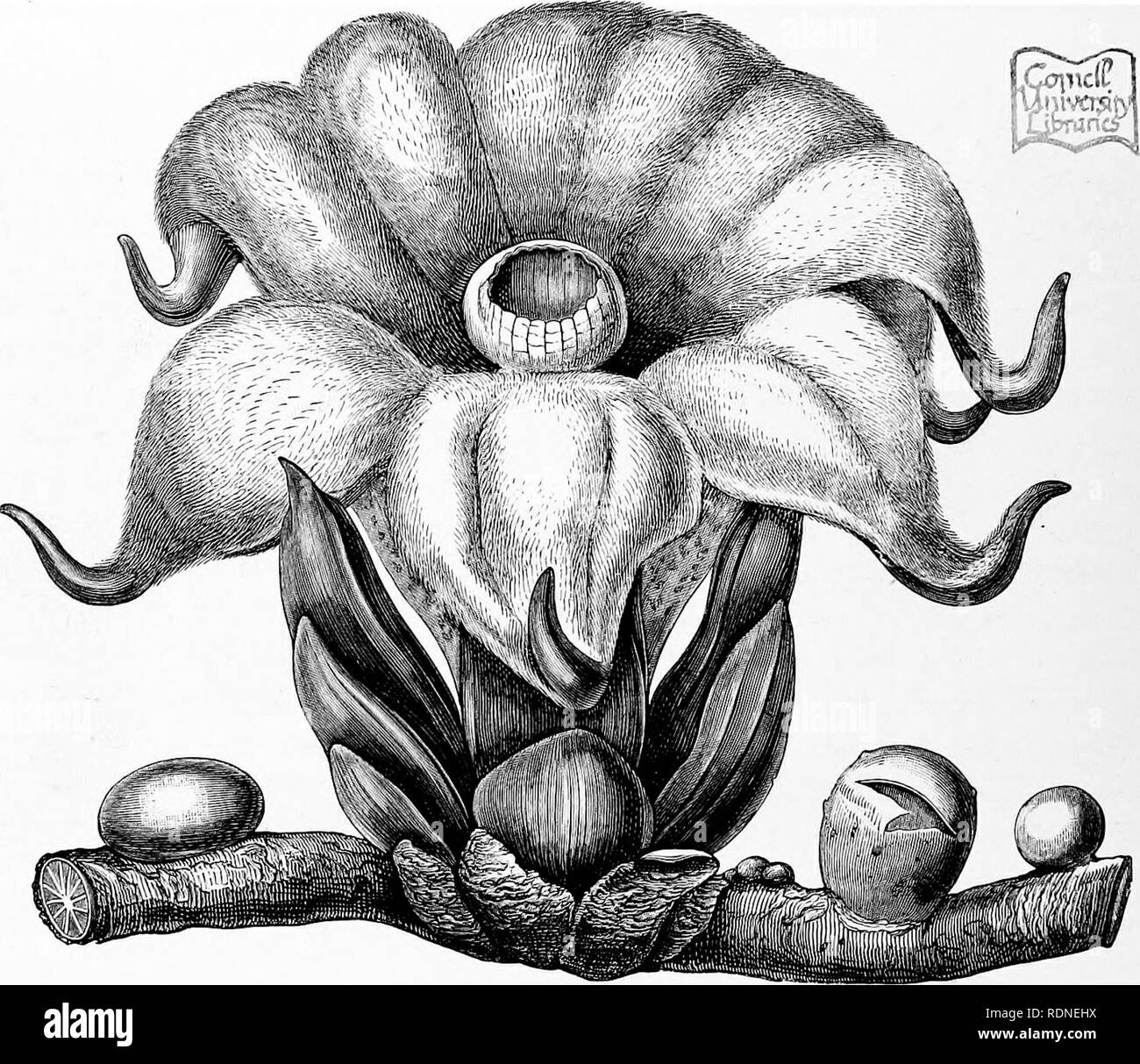. The natural history of plants, their forms, growth, reproduction, and distribution;. Botany. 202 BEOOM-EAPES, BALANOPHOEE^E, EAFFLESIACEjE. from them; but, in the one case the flowers belong to a foreign parasite living under the cortex and have broken through it, whereas in Mezereon it is the flowers of the plant itself that have unfolded. In the case of Pilostyles Hausslcnechtii, which is parasitic on the low bushy tragacanth shrubs of the Persian plateaus, the buds are formed regularly on both sides of the leaf-bases of the host, so that at the insertion of every one of the older foliage-

Image details
Contributor:
The Book Worm / Alamy Stock PhotoImage ID:
RDNEHXFile size:
7.1 MB (641.5 KB Compressed download)Releases:
Model - no | Property - noDo I need a release?Dimensions:
1700 x 1469 px | 28.8 x 24.9 cm | 11.3 x 9.8 inches | 150dpiMore information:
This image is a public domain image, which means either that copyright has expired in the image or the copyright holder has waived their copyright. Alamy charges you a fee for access to the high resolution copy of the image.
This image could have imperfections as it’s either historical or reportage.
. The natural history of plants, their forms, growth, reproduction, and distribution;. Botany. 202 BEOOM-EAPES, BALANOPHOEE^E, EAFFLESIACEjE. from them; but, in the one case the flowers belong to a foreign parasite living under the cortex and have broken through it, whereas in Mezereon it is the flowers of the plant itself that have unfolded. In the case of Pilostyles Hausslcnechtii, which is parasitic on the low bushy tragacanth shrubs of the Persian plateaus, the buds are formed regularly on both sides of the leaf-bases of the host, so that at the insertion of every one of the older foliage-leaves, one finds a pair of buds, which subsequently expand into flowers (see fig. 43a).. i'ig. 44.—Parasitic Bafflesiacea {Brugmansia ZipeUU) upon a Cissus-root. Throughout the species of Apodanthes and Pilostyles the flowers are small— about the size of elder, jasmine, or winter-green blossoms—and by no means conspicuous. But this is not the case in the genera Brugmansia and Rafflesia. The Brugmansias, indigenous to Borneo and Java, have very handsome flowers, as may be seen in the above drawing, which represents on the natural scale Brugmansia Zipellii parasitic upon the root of a Cissus. But in magnitude they are far surpassed by the flowers of the Rafflesise, one of which, viz.: Rafflesia Amoldii, may be described as actually the largest flower in the world. When open it has a diameter of 1 meter, a dimension exceeding even that of the gigantic blooms of South American aristolochias. At the period of emergence of the buds of Rafflesia Amoldii from the roots of the vines which serve them as hostsj they. Please note that these images are extracted from scanned page images that may have been digitally enhanced for readability - coloration and appearance of these illustrations may not perfectly resemble the original work.. Kerner von Marilaun, Anton, 1831-1898; Oliver, F. W. (Francis Wall), 1864-1951; Busk, Marian (Balfour) Lady, 1861-1941; Macdonald, Mary Frances (Ewart